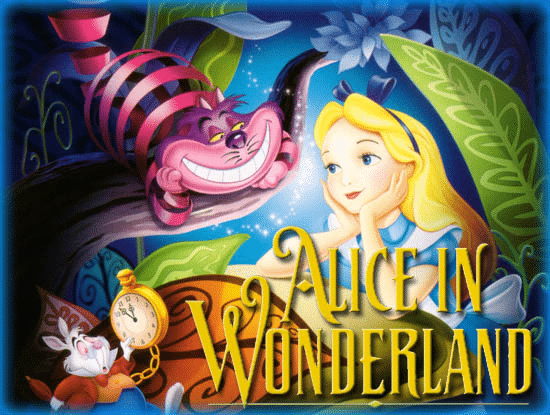There are plenty of interests that are sensible to encourage in children, like painting, but few of those prospects could be as precious as giving them the gift of reading. Just imagine going through life without ever knowing how to read and the large extent to which that inability would impact your life. You wouldn’t be able to read road signs, restaurant menus, movie captions, or books.
Out of all of those mentioned things that you’d miss out on, books could be the most devastating loss. From them, we can learn to communicate better. We can be inspired to reach in regard to our own creativity. We can let our imaginations run free to take a moment out of the stresses of everyday life.
We can enjoy them, dive into them, and live in someone else’s shoes for a while, and that’s a wonderful thing! But in order for literacy to lead to those details, a child has to decide to use their literacy in that way—something beyond reading road signs and questions on a school exam. Something needs to encourage them to pick up books and start exploring them.
This is an idea that hits close to home for me because I lost my appreciation of reading books for years since I’d been forced to deal with so many that I didn’t care so much about through my school years, and it wasn’t until I went to college and started reading outside of classroom assignments that I started adoring literature. Choosing the wrong books, I know from experience, can lead to a distaste for reading in someone who would be a committed reader if their book selections were something more interesting to them.
For me then, it isn’t just about getting a child to read a book. It’s about getting a child to read a book that will keep them reading as the years roll on. The book choices for this task can vary since children have different interests, so certainly keep the child’s personality and hobbies in mind when deciding what books to offer to instill that love of reading. But to help get you started, here are four options that you might want to consider. Each is interesting in its own way to offer a unique experience in the literary world and encourage your child to continue reading!

Pete the Cat and His Four Groovy Buttons by Eric Litwin and James Dean. A simple tale of a cat with a preferred coat who just keeps losing buttons off of it, this story is a wonderful addition to any young child’s library. The illustrations are lovely and unique, almost as if someone painted them with watercolors, and their eye-catching quality alone could be enough to spark interest from a child.
In addition to these color details, the wording of the story is repetitious enough to make most pages feel familiar after a number of read-throughs, and the storyline comes with valuable lessons. Children can get in their math lessons for the day as they count down with Pete the Cat ’s narrator while Pete keeps losing his buttons, and math equations to show how many buttons remain show up in the pages. In addition to the math quality (pun intended?), the underlying lesson of looking on the bright side exists since Pete doesn’t get upset over his lost buttons, but rather continues to be happy even when all he has left is his belly button. A moral to find in that plot is that good things are there, and those are what we should focus on. What better moral could a fictional tale instill in children?

Green Eggs and Ham by Dr. Seuss. This one is a well-known classic, and for good reason! Dr. Seuss has a way with words and rhymes that leave an adult impressed, let alone a child. His worlds and characters are unique enough to make his books stand out, potentially like no other children’s author has been able to accomplish. Green Eggs and Ham makes the list over the rest though because there’s a solid lesson to be drawn from the story. Why? The main character continually refuses to try new food because he’s insistent that he doesn’t like the options, but in the end, he discovers that he actually is a fan of the foods, thereby changing his attitude.
Considering we’re focusing on books for children—people who often refuse to try new foods—this concept is applicable on that very basic and literal level. If a child reads that green eggs and ham turned out to be tasty, perhaps that child will be more likely to try something new at the next restaurant. On a bigger scale, it encourages children to push themselves to try healthy, positive things, which could later inspire them to take up new sports or—how relevant!—read new books. And, in the end, what child doesn’t like rhymes?

The Little Engine That Could by Watty Piper and Loren Long. Another classic on this list, this is the familiar tale of the train that lends a helping hand (metaphorically) to deliver toys to children when other trains refuse to try to assist. The helping train is so small that onlookers might doubt that it’s capable of performing the task, but by continuously insisting that the undertaking can be accomplished, the train pushes on to successfully arrive over the rough hills and obstacles.
The moral of this story is so clear that it barely needs to be covered in this post since it’s that perseverance, a positive attitude, and confidence can take you far—maybe allow you to help someone else in need—so long as you hold to them, believe in yourself, and just keep pushing. Your child might not realize that they’re being offered such a hefty lesson from the tiny book, but as a parent, grandparent, aunt, or uncle who does recognize the benefit, adding a copy of this colorful story to a shelf within your child’s reach would seem like a wonderful option!

Alice’s Adventures in Wonderland by Lewis Carroll. This story, along with Through the Looking Glass , is a tale of a young girl named Alice who finds herself in a world of nonsense, and she must struggle to make enough sense out of the nonsensical situations to sort through the complications that come her way. Whether or not the whole thing is just a dream, the vividness of the experiences is solid enough to feel real to the reader and spark a world of imagination within your child.
While the story’s targeted age is higher than the other books on this list, Carroll’s work is still one that your child could enjoy at a young age as you read it to them, and it can provide a great transition from those earlier children’s books to the young adult novels your aspiring reader might grow into. That transitioning quality isn’t only linked to the length of the story, but also the content as young readers are being introduced to the ideas of logic and illogic before they potentially even know what those words mean. These bigger concepts are steps away from watching as a train travels over hills, making this book a good literary stepping stone. So should find that your little one is too old to enjoy Fox in Socks , try reaching them a copy of Alice’s Adventures in Wonderland . Other stories could follow— Harry Potter and the Sorcerer’s Stone by J.K. Rowling or The Giver by Lois Lowry—but few books can provide that solid first step toward more complex, longer books like one of Carroll’s works.
Even though you should allow your child’s interests to guide your way in choosing reading material, these works provide good starting points in that search because of the imagination and moral fiber that are behind them. They’re solid additions to your child’s bookshelf, so be sure to give them a look next time you’re at the bookstore to ideally instill a literary love that will stay with your child forever.
Source –www.forlearningminds.com/


